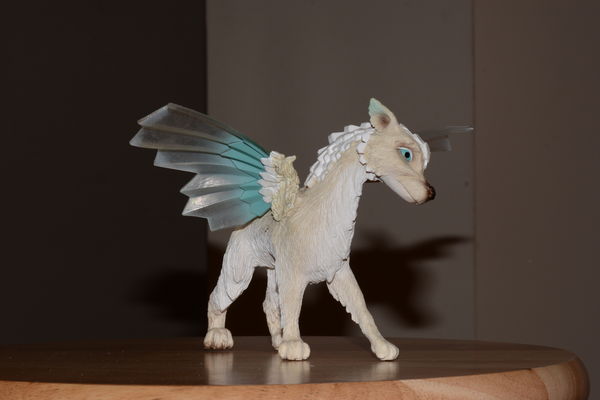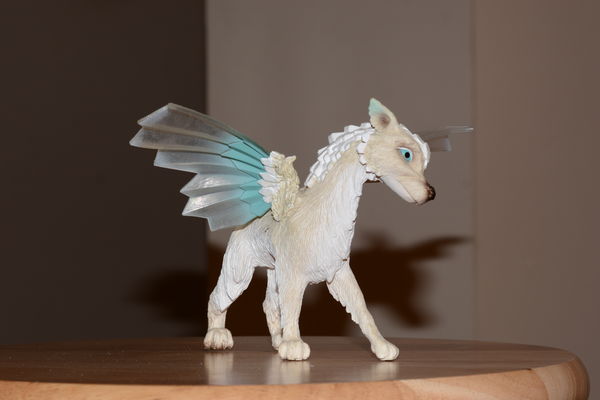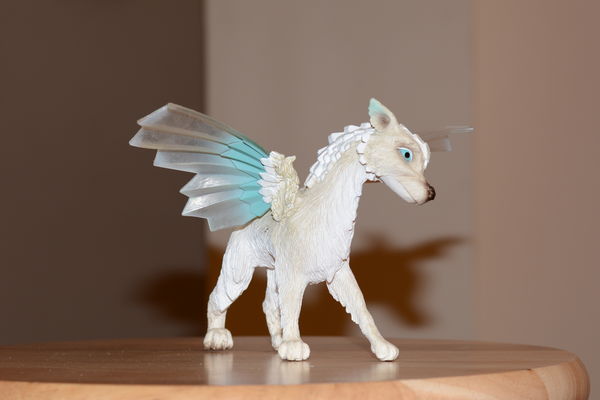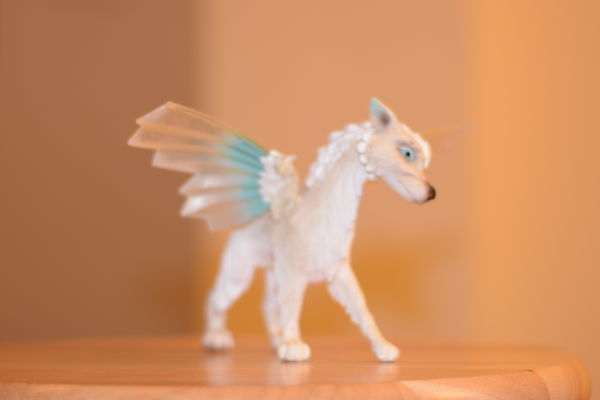What is happening here?
May 17, 2017 12:25:11 #
First thank you for this site. I am trying to get out of "Auto/Scene" so please be patient when I ask the same old questions AGAIN since I am sure that they have been answered before many times. Also it is worth noting that I am blind in one eye and have no depth perception so I am not real sure how depth is supposed to look. So far has have not been able to equate something to help me determine depth. Now I have been this way all of my life and use small tells in everyday life to help determine distance like counting ceiling tiles or floor tiles, the size of an object, things of that nature. So short of getting a tape measure out and staging a shot I don't know how I need to compose things to make them not look flat to everyone else(they always look flat to me).
Here is my setup:
Nikon D7100
Nikon fixed 50mm 1.8 (currently used in these pictures)
Nikon 18-300mm 1:3.5-5.6
SB900 Flash (current not used in these pictures)
Mounted on Tripod and using remote trigger
So here is my understanding of what happens when you change different setting. Please correct me if I am wrong on any of these
1. ISO - sensor speed (how fast the sensor can capture the image)
2. Shutter - How much light enters lens(how long the shutter stays open)
3. Aperture - focus area meaning that at 1.8 I am wide open meaning by subject and background are in focus (how big the opening is to focus on)
So I took a series of pictures at 30" from subject to camera using on board flash all set at 1/20s ISO-100
So I have a couple of questions on what is happening and why?
1. Why are the pictures getting lighter as I decrease the f-stop as well as loosing detail?
2. On picture 4 why is it now blury as well as washed out?
Any advice would be greatly appreciated.
Here is my setup:
Nikon D7100
Nikon fixed 50mm 1.8 (currently used in these pictures)
Nikon 18-300mm 1:3.5-5.6
SB900 Flash (current not used in these pictures)
Mounted on Tripod and using remote trigger
So here is my understanding of what happens when you change different setting. Please correct me if I am wrong on any of these
1. ISO - sensor speed (how fast the sensor can capture the image)
2. Shutter - How much light enters lens(how long the shutter stays open)
3. Aperture - focus area meaning that at 1.8 I am wide open meaning by subject and background are in focus (how big the opening is to focus on)
So I took a series of pictures at 30" from subject to camera using on board flash all set at 1/20s ISO-100
So I have a couple of questions on what is happening and why?
1. Why are the pictures getting lighter as I decrease the f-stop as well as loosing detail?
2. On picture 4 why is it now blury as well as washed out?
Any advice would be greatly appreciated.
Picture 1 f/16

(Download)
Picture 2 f/9

(Download)
Picture 3 f/5.6

(Download)
Picture 4 f/1.8

(Download)
May 17, 2017 12:38:55 #
Darrel, Depth perception and depth of field are two separate concepts. Depth perception is the "innate" ability to sense how far or near something is from you. Having sight in one eye tends to limit, if not eliminate, the ability to guess distance.
Depth of field, DOF, is a quality of a lens that limits how far in front of and behind a subject on which the lens is focused to render an acceptably sharp rendition of that area around the subject. The limits of DOF are usually divided up as 1/3 in front and 2/3 behind. That is of the total portion of the scene that appears in focus, 1/3 of that total will be in front and 2/3 will be behind the subject on which the lens is focused.
The total distance from front of focused area to back of focused area varies depending on the focal length of the lens and the aperture of that lens.
I hope this helps with the concepts.
--Bob
Depth of field, DOF, is a quality of a lens that limits how far in front of and behind a subject on which the lens is focused to render an acceptably sharp rendition of that area around the subject. The limits of DOF are usually divided up as 1/3 in front and 2/3 behind. That is of the total portion of the scene that appears in focus, 1/3 of that total will be in front and 2/3 will be behind the subject on which the lens is focused.
The total distance from front of focused area to back of focused area varies depending on the focal length of the lens and the aperture of that lens.
I hope this helps with the concepts.
--Bob
darrelm1967 wrote:
First thank you for this site. I am trying to get... (show quote)
May 17, 2017 12:53:22 #
MichaelH
Loc: NorCal via Lansing, MI
And to expand on the previous answer:
As you increased the aperture (decreasing the f stop value) you were decreasing the depth of field and that is what you saw happening. If you had a row of unicorns at increasing distance you would have had a better view of what was happening. And as for the increasing exposure (lightness) you seemed to be just changing the f stop with the shutter speed (with flash) and the ISO remaining constant. So again that is the expected result as you let in more light as the aperture increases.
As you increased the aperture (decreasing the f stop value) you were decreasing the depth of field and that is what you saw happening. If you had a row of unicorns at increasing distance you would have had a better view of what was happening. And as for the increasing exposure (lightness) you seemed to be just changing the f stop with the shutter speed (with flash) and the ISO remaining constant. So again that is the expected result as you let in more light as the aperture increases.
May 17, 2017 12:54:12 #
Bob, thank you for the reply and explanation. yes it does help some. So from the shooters POV how do I determine how to set the DOF from subject to background?
May 17, 2017 12:57:30 #
wdross
Loc: Castle Rock, Colorado
darrelm1967 wrote:
First thank you for this site. I am trying to get... (show quote)
Darrelm1967, the best way to think of aperture is as a fraction. The reason that the pictures get lighter is with the smaller numbers more light is coming in. What you want to do is divide 1 by the aperture number. For example 1/1.8 or 1/16. That fraction represents the relative amount of light coming through the lense. The larger the number, the smaller the amount of light.
May 17, 2017 13:16:20 #
MichaelH, thank you for the explanation. Maybe I will line of a set of subject as you described and see the results.
May 17, 2017 13:17:24 #
May 17, 2017 13:20:03 #
Darrel, here's a pretty good article on DOF:
http://www.photopills.com/articles/ultimate-guide-depth-field
Here's a calculator that will help figure DOF for you:
http://www.photopills.com/calculators/dof
--Bob
http://www.photopills.com/articles/ultimate-guide-depth-field
Here's a calculator that will help figure DOF for you:
http://www.photopills.com/calculators/dof
--Bob
darrelm1967 wrote:
Bob, thank you for the reply and explanation. yes it does help some. So from the shooters POV how do I determine how to set the DOF from subject to background?
May 17, 2017 13:35:10 #
May 17, 2017 13:50:30 #
May 17, 2017 20:15:05 #
Pick up this book: https://www.amazon.com/s/ref=nb_sb_noss_2?url=search-alias%3Dstripbooks&field-keywords=
This is the best book on exposer IMHO. I've been shooting with DSL's for over 40 years and I have the latest edition and still use it for reference.
This is the best book on exposer IMHO. I've been shooting with DSL's for over 40 years and I have the latest edition and still use it for reference.
May 17, 2017 20:46:25 #
WayneT, thank you for the link, but it is not opening to the book, rather to books in general. Can you provide the name of the book along with the author please?
May 17, 2017 21:18:50 #
I don't know why it did that but try this link: https://www.amazon.com/s/ref=nb_sb_ss_rsis_2_0?url=search-alias%3Dstripbooks&field-keywords=exposure&sprefix=%2Cstripbooks%2C419
May 17, 2017 21:19:50 #
May 17, 2017 21:20:10 #
If you want to reply, then register here. Registration is free and your account is created instantly, so you can post right away.


